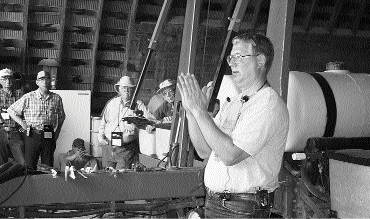No-Till Farmer
Get full access NOW to the most comprehensive, powerful and easy-to-use online resource for no-tillage practices. Just one good idea will pay for your subscription hundreds of times over.

How will your planter perform in no till? Today’s stronger, heavier equipment is designed to cut and handle residue, penetrate soil to your desired seeding depth, get proper seed-to-soil contact and close the seed-vee. With these four functions in mind, University of Nebraska engineer Paul Jasa says you need to evaluate your no-till planter early in the spring while you have time to make adjustments or buy attachments.
Head to the field with your empty no-till planter as soon as weather and field conditions allow in the spring. Have your owners’ manual close at hand. Evaluating a no-till planter loaded down with seed, fertilizer or insecticide is not recommended.
Check the double-disc openers for wear adjustment. Adjust individual discs inward as they wear by removing the spacer washers from behind them. Replace discs if necessary to keep the two blades of the seed-furrow opener working together as one cutting edge.
If the two blades are mounted side-by-side (John Deere, Kinze, White), there should be about 2 inches of blade contact on the leading edge. On staggered disc seed-furrow openers (Case IH, Duetz Allis), the rear disc should be tucked in behind the leading disc and just be touching. When properly adjusted, these seed-furrow openers can easily cut residue and penetrate the soil without coulters or row cleaners.
On well-drained or highly-erodible soils, residue remaining in the row area will absorb raindrop impact, reducing erosion, eliminating crusting and drying out the seed zone. On poorly drained soils, consider using “spider wheel”…